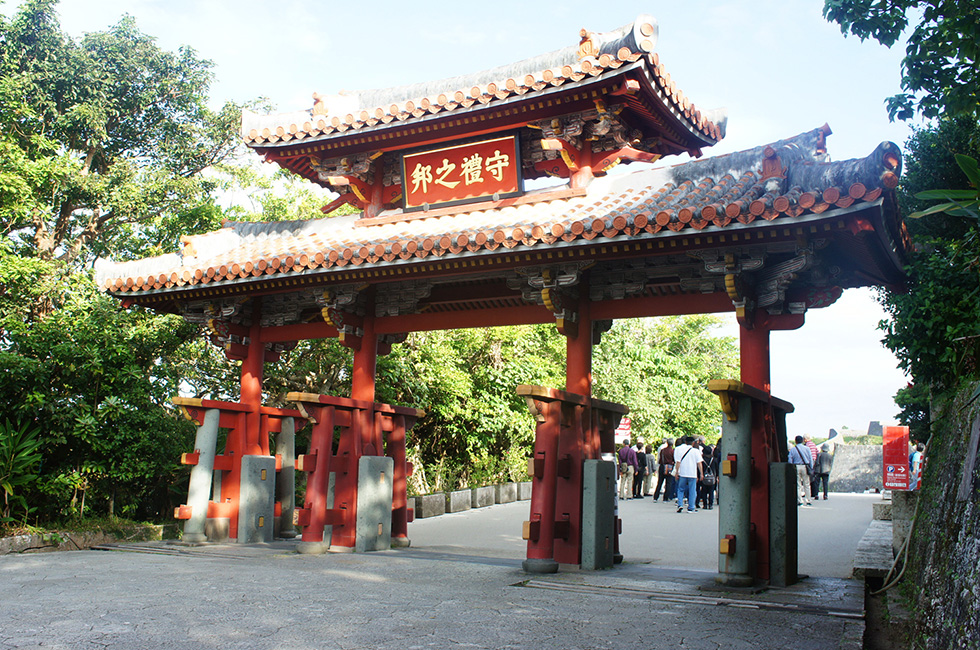Shureimon Gate
Home > Visitor’s Guide > Ryukyu Kingdom exploration ~American writer's gaze~ > Shureimon Gate
Shureimon Gate

The Shureimon is a ceremonial, Chinese-style polychrome wooden gate located very close to Shuri Castle. It was built by the order of King Sho Sei between 1527 and 1555, and is one of the most famous and widely recognized symbols of Okinawa. Initially, the Chuzanmon Gate, built 100 years earlier about 500 meters to the west, was the primary ceremonial gate to the castle, where court officials would greet envoys and other important visitors. The distance, however, proved inconvenient, and a new gate closer to the castle itself was deemed necessary.
The name Shureimon comes from a declaration by the Ming Emperor in 1579 that “Ryukyu deserves to be called ‘a nation of propriety.’” A lacquered tablet was then inscribed with the words “Shurei no Kuni” (A Nation of Propriety) and displayed on the gate. This was considered both a declaration that Ryukyu would uphold Confucian principles, and an exhortation to the populace to do so. Although other tablets were displayed on the gate at various times, Shureimon is most strongly associated with the Confucian virtue of propriety.
International Influences in Design
Like the Chuzanmon, the Shureimon Gate was based on the Chinese roofed “turret” gate style called paifang, with a lower red-tiled roof spanning the full width of the gate surmounted by a higher roof in the center. Like all major Ryukyuan monuments, its design is an amalgam, with various stylistic influences supplementing the basic Chinese form. Unusual carved stone panels reinforce the gate at its base, possibly as a measure against typhoons. At about 7 meters high and 8 meters wide, the Shureimon Gate is wider than it is tall, which along with the absence of any doors, suggests a sense of welcome and celebration, and little pretense of defense.
Symbol of Okinawan Cultural Identity
The Shureimon Gate was an iconic symbol of Ryukyuan culture, and often appears as the highlight in visual representations of Shuri Castle. It was documented by American military engineers and artists sailing with Commodore Matthew Perry when his fleet visited the kingdom in 1853–1854. The gate survived the dissolution of Ryukyu in 1879, and continued to mark the entrance to Shuri Castle even after it was transformed into a Japanese military barracks, school, and Shinto shrine. It was declared a Japanese National Treasure in 1933, but was destroyed during the Battle of Okinawa in 1945. Due to its immense civic and cultural importance, it was the first structure at Shuri to be reconstructed after the war. The current gate was completed in 1958.
© Shurijo Castle Park All Rights Reserved.


